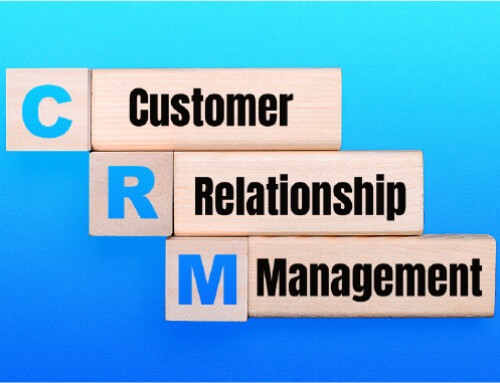Contents
Looking for a way to improve your conversions? Tried lead qualification already? Let’s turn things around and disqualify them instead! Sure, more leads do seem to go with more sales, but it’s not always true. I personally prefer looking at my CRM and seeing lots of prospects ready for the sales team to work on. The number of leads that marketing passes down to the sales team can seem like a good KPI for success sometimes.
Turns out that too many weak leads is more of a drain on your profits than too few leads overall. You have to consider the time and effort you and your sales team spend on persuading each lead to make a purchase. The cost of persuading a lead will be perfectly wasted on weak leads that are not likely to buy from you. This is where lead disqualification becomes more important than the usual lead qualification.
Naturally, an effective lead management process should include a loop that takes disqualified leads back to marketing. Back in the marketing stage, these leads will be segmented and then assigned specific nurture programs based on the reason of their disqualification. For example, for a lead who is not ready to buy this year, you can try sending an email every couple of months or more. That way, they’ll be more inclined to take action once their conditions are right.
Once your sales team gets the list of leads from marketing (the so-called Sales Accepted Leads) you need to go through them with giant gardening shears and disqualify them with a vengeance. Don’t be afraid of lowering your sales by cutting off those hard-won leads — they’ll end up costing you more than they’ll bring. Before diving into the criteria for disqualifying Sales Qualified Leads (SALs), let’s get more familiar with them.
What are Sales Accepted Leads?
SALs, or Sales Accepted Leads, are leads that have been accepted by a sales rep and are ready to be worked on. SALs are usually handed down from marketing, having passed the stage of Marketing Qualified Lead. Like all leads, the Sales Accepted Leads can be traced back to the usual sources, like:
- Referrals
- Email lists you’ve built
- Your website
What is different about them is that they have been confirmed as valuable by your marketing guys and must now be passed onto your sales team. So, SALs are basically MQLs that your sales team “accepts” to work on, after running them through a tough lead-disqualification process.
The most common source of SALs is your website—this is the reason why it’s so important to have a strong landing page on your site. When someone visits your homepage and chooses “Contact Us” or any other contact button on your site, they’re sending their information (name, email address) directly into Salesforce as an unsolicited lead (or SAL). By investing in a great user experience for people who choose to get in touch with you online, you’ll be able to capture lots of SALs over time.
Why are SALs so important?
SALs help to reduce the cost of sales, increase revenue, and improve the quality of your sales process. If you don’t have SALs, it’s easy to miss out on opportunities and slow down the flow of leads from marketing to sales.
SALs are leads that are assigned a number so that there’s no confusion about which lead belongs to whom or when. SALs also cut down on wasted time during the hand-off between marketing and sales teams because there is less confusion as to who needs what information/what information is available for each team member.
How to Manage and Disqualify SALs?
To manage SALs, sales reps need a tool that can help them do the following:
- Create a prospect list (lead management)
- Score prospects based on their likelihood to buy your product or service (lead scoring)
- Automate email campaigns and drip marketing campaigns (lead nurturing)
Of course, each tool has its own advantages and disadvantages. There are some that prefer working with Excel or Google Sheets and for their business size, that may even be enough. Most businesses, however, use a CRM with marketing and sales automation features. Also called an all-in-one CRM or business management software, the best CRM for lead qualification is one that includes the most powerful tools.
So, what are the best tools for sales reps? There are a few candidates like the insanely expensive Salesforce and the equally high-end HubSpot. RunSensible, however, is the only CRM and automation software that’s packed with the right tools and features while still affordable for small business owners and even solo entrepreneurs. RunSensible allows you to manage and score your leads, create custom fields and use them to segment your prospects according to their interests. It also offers powerful automation tools that help you add notifications, email and SMS drip campaigns, and more.
Sales accepted leads are important to businesses because they help to increase revenue and reduce the cost of sales. They also benefit the organization in the following ways:
- Increase customer satisfaction
- Increase customer retention
- Increase customer referrals
SALs help to increase revenue and reduce the cost of sales. They are usually generated by salespeople, but they can also come from other areas within the company, including customer service or product support. SALs are an important part of any business because they help generate revenue while reducing costs associated with marketing campaigns.
11 Disqualification Reasons for Sales Accepted Leads
If you accept leads that don’t meet the criteria for your product or service, you will end up with a lot of unqualified prospects. If this happens too often, it will be hard to sell anything at all. So how do you know when to disqualify a lead? Here are some typical reasons why sales reps should disallow prospects from entering their pipeline:
1. Industry
The industry is too small. If you have fewer than 100,000 leads in the last 12 months, it’s likely that the industry you’re marketing to isn’t large enough to provide data for insights. The same goes if there are less than 25 million people within this group.
To determine if your industry is large enough, start by looking at how many companies are actually in that line of work—and how many people work for them (not just make purchases!). Look at these two numbers together: If it’s below 2 percent of both figures, your industry might be too small for lead scoring!
The same logic applies to fragmentation: If there’s no clear leader or trendsetter in terms of size and reach within an industry, then analyzing leads could prove challenging. Remember: You want as much data as possible so that you can make informed decisions about who gets qualified and who doesn’t during the qualification process.
2. Type Of Business
The type of business the lead is in can be a major indicator of whether or not they are a good fit for your company. For example, if you are an enterprise software company and you get a lead from an account manager at a Fortune 500 company who wants to purchase your software for his team, that’s probably a good lead. If you’re a SaaS software company and get an inquiry from a consumer whose car just broke down at the local shop, that’s probably not going to be as fruitful.
With this in mind, it’s important to think about how many potential types of businesses there are out there: consumer (B2C), enterprise (B2B), B2B2C (business-to-business with the consumer), B2G (business-to-government), etc., each with their own set of needs and expectations when it comes to products or services like yours.
3. Too Early
If you think about it, the biggest reason a lead may be too early is that they don’t need your product yet. If this is the case, then why would you bother with them? The answer is simple: as a salesperson, you want to maximize your chances of making a sale. And if there’s one thing we know about leads who are too early in their lifecycle, it’s that they’re pretty hard to turn into customers.
The best example I can think of for this is when someone has just launched their company and is looking for funding. A friend of mine recently raised more than $500K from an angel investor because he knew his business model was sound and could get traction quickly once he got started (which he did).
That said, there are some situations where an opportunity might be too early but still worth pursuing if there’s enough potential upside or urgency around it—like raising capital!
4. No Authority
Qualifying a lead is all about making sure the person you’re speaking with is the right person. Most salespeople disqualify leads because they have no authority, which means they don’t have the ability to make a purchase and aren’t part of the buying process.
But there are other ways to disqualify leads:
- The prospect has no authority but wants to be heard by someone who does (the equivalent of shouting into a megaphone).
- The prospect wants a recommendation, but doesn’t know what products or services would best fit their needs.
The prospect wants to be sold, but doesn’t know what they want or need. The prospect wants to learn about your company and its services. As you can see, these are all very different situations. Each requires a different approach from salespeople who are qualified and ready to provide value.
5. Can’t Provide Feedback
Feedback is the most important thing to get from a lead. It tells you what they think of your product, your sales pitch and if you should pursue their business further. If you cannot receive feedback from leads, then they are not leads worth pursuing.
6. Company Size
At first glance, the idea of disqualifying a lead based on company size might seem like an odd one. After all, the key metrics for a business are not necessarily related to its size. But when it comes to lead qualification and trying to determine whether or not a prospect is worth your time, there are several important factors that you can use as indicators of whether or not they’re a good fit for your business.
Small companies often have smaller budgets than larger ones. This means that if they do have money available for marketing campaigns and sales initiatives, they may be more likely to spend it on things like SEO services and social media advertising instead of traditional advertising methods like television commercials or radio spots. And while this could potentially be beneficial for your company (eek!), if your primary strategy involves those kinds of traditional strategies as well as other forms of outbound marketing such as direct mail—which can cost hundreds or even thousands per contact—then it’s probably best not to waste your time with these leads at this point in time because their budgets aren’t likely high enough yet anyway
7. Competitor Engagement
Competitor engagement is a great way to disqualify leads because it helps you determine if the prospect is even interested in purchasing from you. If they’re not, there’s no reason for you to waste your time with them.
Competitors are not interested in buying from you: You’ve identified a lead and learned that they’re a competitor; now what? You might be thinking “Well let’s just see how far down the rabbit hole I can go! Let me find out everything about this person.” But here’s what happens—you spend hours upon hours learning about them, emailing them back and forth trying to get their attention, and eventually crickets start chirping because they’re not interested in buying from you. They’re focused on their own business and don’t want anything else distracting them right now.
Competitors are in a different market than yours: Another common scenario where competitors aren’t looking at purchasing your product or service is when there is no overlap between the two companies’ businesses.
8. Too Cheap?
If you are not in the right market, your product will not sell. If you’re too cheap, you’ll have a hard time scaling properly.
Many startups believe they can charge less and still make money because they’re offering something new and different from what’s already on the market. This is often true—as long as you have a truly innovative concept with a clear value proposition for customers. But if your benefit isn’t obvious enough for people to see its worth immediately, it’s unlikely that anyone will pay more than $10/mo or $20/year for your service (if they do).
When starting out with an MVP (minimum viable product), start by targeting customers who can afford to pay more than $10/mo or $20/year but have an urgent need for your solution: namely people who need help solving their problems urgently because those problems will affect their lives negatively if left unsolved—and who aren’t willing or able to find other solutions on their own (e.g., take expensive courses).
If you want more information about pricing strategies for startups like yours, check out our article “The 6 Pricing Strategies That Will Help You Get Traction.”
9. Need More Internal Alignment
The sales team needs to be on the same page, and you don’t want to waste time with leads that have low internal alignment.
What are examples of internal alignment? Well, there are many types of internal alignment—but you can start by making sure that all members of your sales team understand who your ideal customer is and what you do for them. You also need all members of your sales team on board with their role in the process (for example: one rep may be a buyer, while another rep may be a closer).
Are there any other factors that could negatively impact this particular customer or prospect? If so, how might those factors affect their ability to make a purchase decision?
10. Doesn’t Have A Problem You Can Solve!
If you don’t have the solution to their problem, you can’t solve it. And if they don’t have a problem in need of solving, there’s no reason for them to buy from you.
The bottom line is that many small business owners are willing to pay big bucks for solutions—but only if those solutions meet the needs of their unique problems. If not, they’ll go somewhere else!
11. Roi Too Low To Justify The Costs Of Sales Process
The ROI (return on investment) of each lead needs to be greater than the cost of the sales process. This may seem obvious, but it’s often overlooked or ignored. In order to make this calculation, you need to know how much you are spending on acquiring a new customer and what their lifetime value is. If your cost per acquisition is $1,000 and they spend $1,200 over their lifetime as a customer – then it makes sense to pursue that lead. If instead of spending $1k, they only spend $500 over their lifetime – then it doesn’t make sense for you to pursue that lead anymore unless there’s some other reason why pursuing them could be beneficial like brand awareness or relationship building etc…
General Rules for Disqualifying Sales Accepted Leads
The Leads Are Not A Fit For The Product Or Service
- The leads are not a fit for the product or service.
- You can also disqualify leads if they don’t have the right business profile and are therefore not likely to become customers. For example, if you’re selling products in the automotive industry, you might want to consider only working with those who own cars because it would make sense that they would want your products and services.
The Leads Have No Money
Another reason to disqualify leads is if the lead has no money. Money is a key factor in buying decisions, and if your customer does not have any funds at all, it’s best to move on. If they do have funds, but they’re not enough for you to sell them something (or even more appropriately: if they have enough money to buy your product or service but not enough for what you are selling), then it may also be time to let this lead go.
The Lead Is Not Ready To Buy Your Product Or Service.
- The lead is not ready to buy your product or service.
- The lead is not ready to buy now. Don’t waste time on leads who say they want to “think about it,” and then never call back or email you again. If they were serious about buying from you, they would have done so already!
- The lead is not ready to buy from you (or your company). This can include terms like “one-time only” or “no refunds/cancellations allowed,” which clearly indicate that this person has already made up his mind based on what he has read online about how much better other companies are than yours—and why should he trust yours over theirs?
- The fact that a company can’t afford what we’re offering means that we’re not going to waste our time on to persuade them to make a purchase decision.
The Lead Is Happy With Their Existing Vendor.
A lead that is happy with their existing vendor is a great sign. If a lead has no interest in changing vendors, it’s highly likely they will have the same attitude towards the company you’re calling on behalf of.
A lead that is not ready to make a change in vendor or product/service can be disqualifying as well (though it’s often harder to tell). They may have money available and be ready to buy but are still trying out other options, so they won’t be interested in buying from you just yet—or ever!
There Is No Contact Decision Maker.
If you get a lead and the person on the other end of the phone is not authorized to make decisions, you should disqualify that lead. You don’t want to waste your time or theirs by trying to sell something they can’t afford or won’t use.
For example, if someone calls in saying they’re interested in buying your product but then asks if there are other options like “free shipping,” ignore them—they’re not qualified for this sales process.
You might also want to check with their contact person before getting into too much detail about what’s included in their package (if it makes sense). If that doesn’t work out either, then move on!
You Have No Good Contacts At The New Prospective Company.
You have no good contacts at the new prospective company.
You can’t sell to them if you don’t know who their decision makers are, how to reach them and what they’re looking for in a salesperson. If you’re not familiar with your prospect’s business, then it won’t be easy for you to qualify as a fit for their needs.
Know When To Disqualify Sales Prospects
When it comes to sales, you have to know when and how to disqualify leads.
Disqualifying a lead means that they are not a good fit for your company or product, either because they do not have the money to purchase what you’re selling or because their size doesn’t match up with your ideal customer profile. Even though these prospects may be qualified on all other fronts—they may even have excellent contact information and relevant background information—you can’t sell them something if they don’t fit into one of these categories:
- They don’t meet size criteria (i.e., they’re too large)
- They’re too small (i.e., too small)
- They don’t have enough budget for the product They don’t want to buy from you (i.e., they’re not a good fit) They’re not in your ideal customer profile (i.e., they don’t meet all of your criteria)
The Lead is not Ready to Buy
A lead has already expressed interest in your product or service. You’re excited, but there are many considerations to make before you can count them as a qualified lead. One of the most important is their buying process.
Once you have a sense of their buying process and decision timeline, you can identify potential obstacles to closing a deal with them. For example, if it takes six months for a particular type of decision maker at an organization to buy in before decisions are made and implemented, then it will likely take over two years for that organization to complete the entire cycle from first contact with you until purchase (assuming no delays).
All of these are valid reasons to disqualify a lead. You should feel confident that the leads you select to follow up with are not only qualified but also likely to convert into paying customers.
The best way to avoid disqualifying leads is by following the simple rules of good sales. Never give up on a lead, even if it seems hopeless. There are times when leads won’t be a fit for your product or service, but they’re still worth pursuing and educating. In this case, at least consider adding them as future customers anyway so that you can learn what their needs are before moving forward with making any changes in terms of pricing or services offered by your business!
What are BANT Qualified Leads?
A lot of salespeople use the BANT model to find which one of the Sales Accepted Leads have to be disqualified. I’m sure you’ve heard of BANT before. It’s an acronym that stands for budget, authority, need and timeframe. But what does this mean? And why do you need BANT-qualified leads?
For starters, it’s important to note that a BANT qualified lead is different from just any lead. A BANT qualified lead is one which meets the criteria laid out above—the four pillars of a strong sales pipeline: budget, authority (or decision maker), need (or pain point) and timeframe (when they’re ready). It’s important to qualify your leads before you start selling because if you don’t do this, then you could end up with a lot of unqualified prospects who might not be ready or willing to buy from you at this moment in time. Qualifying your leads will also help ensure that your sales team has enough time to focus on qualified prospects instead of wasting it trying to sell someone something who may not be interested or able to make a purchase right now.\
BUDGET
Budget is the amount of money a prospect is willing to spend on your product or service. The budget can be very important in deciding if you should pursue a lead, as it tells you how much profit there is for you to make. It’s important that you stay within your prospect’s budget so they don’t feel like they’re getting ripped off, but it’s also important that you don’t pass up leads just because their budget isn’t large enough for this time around. If it makes sense for the two of you to work together and your company has room in its schedule, then go ahead and take that call!
AUTHORITY
Authority is the fifth BANT qualification and it’s what allows you to determine if a lead is ready to buy. A prospect must have the authority to make a purchase. The authority factor can be a slippery slope, depending on your business. For example, in some industries (such as maintenance), many employees have the authorization and ability to make purchases without approval from their superiors. In other industries (such as software development), approvals are much more common and therefore require more attention when qualifying leads using the BANT method.
For example: When qualifying your leads via telephone or email interactions with prospects, consider asking them questions like these:
- Can I count on you for this?
- Is there anyone else involved? If so, who?
- What happens when they say no?
NEED
Here is some questions about the needs of the prospect that can help you disqualify the wrong ones from your sales process.
- What do they need?
- How can you help them?
- Do they need a product or a service?
- Do they need to solve a problem?
- Do they need to improve their business processes?
TIMEFRAME
The timeframe describes exactly how long it will take to complete the project. You may think this is obvious, but in case you’re not sure: we mean from start to finish. That includes time for planning and designing, as well as building and testing. It also includes any other steps that might be involved in your project (like getting a permit). When estimating a project’s timeframe, it’s important to consider all aspects of the process—including how long it’ll take to get started on anything else related to your project (such as hiring employees or obtaining permits). If something goes wrong with one aspect of your timeline, then everything connected with that stage of development could get delayed too!
Disqualifying Sales Accepted Leads the Fast Way
Remember how I said lead disqualification is critical because it helps save your time and budget? Well, in fact, it can become a drain on your time and resources by itself. If your team is spending more and more time disqualifying Sales Accepted Leads (SALs) than trying to close deals and sell to high-value Sales Qualified Leads, you’re still not running an optimized sales funnel.
Using the right tools can make the whole disqualification process much faster and easier for your sales reps. That’s why choosing the best CRM and automation software will go a long way to getting lead management right. RunSensible is the most feature-rich one-in-all CRM and automation platform that is actually affordable for solo entrepreneurs and small businesses. It includes customizable lead-scoring tools that will automatically separate the wheat from the chaff, making disqualification much faster. RunSensible also gives you all the tools you need to nurture disqualified leads for their next time around. It also comes with enough sales automation tools to make the later sales process much easier too. Take a look for yourself (it’s free, no credit cards) or ask us for a demo.
FAQ
What is a Sales Accepted Lead (SAL)?
Sales Accepted Leads (SALs) are leads that have already been approved by marketing and moved further down your sales funnel, waiting to be qualified by the sales team.
Is a sales accepted lead the same as a sales qualified lead?
Not at all. In fact, Sales Qualified Leads (SQLs) are the leads that are left when you’re done disqualifying some of the Sales Accepted Leads according to the criteria I explained here.
Why is lead disqualification an important part of the sales process?
Without disqualifying your weaker leads, you’ll spend time, effort, and money on trying to convert them, which will fail, of course. So, without disqualification, you’ll actually add to your costs instead of your profits.
What tools do I need to disqualify sales accepted leads?
The most elegant solution is to use an all-in-one CRM and automation software like RunSensible that can handle lead management, lead scoring, lead nurture and email campaigns as well as sales automation.
Disclaimer: The content provided on this blog is for informational purposes only and does not constitute legal, financial, or professional advice.






